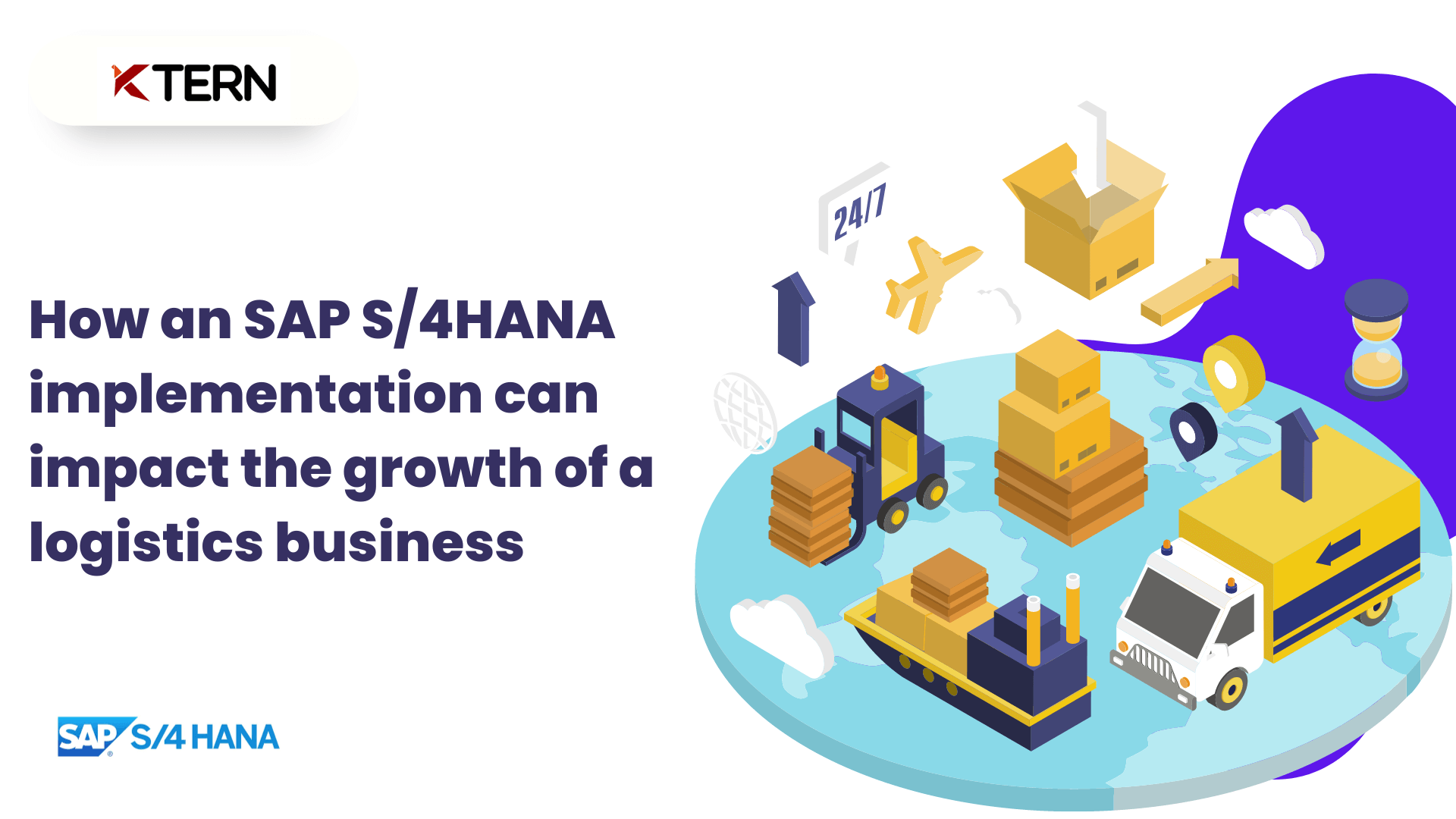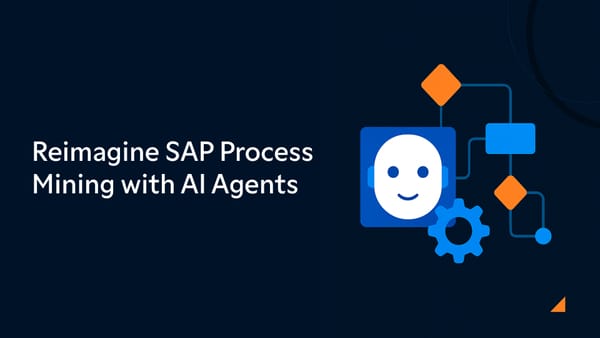How an SAP S/4HANA implementation can Impact Logistics
Logistics is an intricate part of pretty much any business around. It's an industry that has grown tremendously over the past several years and continues to do so.
You've heard about the SAP S/4HANA implementation but you're still wondering how this will impact the growth of your logistics business. You might be wondering how much impact SAP S/4HANA implementation has on supply chains, business processes and customer service.
In this blog we will be focusing about how SAP S/4HANA can impact the growth of your logistics business.
Table of Contents:
- What is SAP S/4HANA?
- Benefits of SAP S/4HANA
- How to Implement S/4HANA Successfully and Resourcefully?
- Overview of SAP S/4HANA Logistics
- S/4HANA Extended Warehouse Management
- SAP S/4HANA Logistics Lines of Business
- S/4HANA Condition Contract Management
- Settlement and Reporting of Contracts
- S/4HANA Output Management
- All about Storage location MRP Area
- What is SAP S/4HANA Readiness Check?
- Knowing about Custom Code Adaptation
- Moving Process from Compatibility scope to Strategic Solutions
- Why is SAP S/4HANA important for Logistics Businesses?
- Understanding of S/4HANA Transformation
- SAP S/4HANA implementation - Challenges
- Making the Migrations easy, smooth – KTern.AI
- Offerings of KTern.AI
- Conclusion
What is SAP S/4HANA?
SAP S/4HANA is a business suite that helps companies manage their finances, operations, and customer relations. It includes features for accounting, product lifecycle management, supply chain management, and more. It runs on the SAP HANA database, which is designed for high performance and scalability.
SAP S/4HANA can help logistics businesses grow in several ways. First, it can improve visibility into all areas of the business, from finance to operations to customer relations. This helps managers make informed decisions about where to invest resources.
Second, SAP S/4HANA can automate many manual processes, freeing up employees to focus on more value-added activities. Finally, SAP S/4HANA provides a platform for integrating with other software applications and systems, which can help businesses streamline their operations and extend their reach.
Benefits of SAP S/4HANA
- There are many benefits that a logistics business can experience after implementing SAP S/4HANA. Perhaps the most important benefit is the ability to scale the business more effectively.
- With SAP S/4HANA, businesses can take advantage of real-time data processing and analytics to make more informed decisions about how to grow their operations.
- Additionally, SAP S/4HANA can help businesses improve their customer service levels. By being able to access information in real time, businesses can provide their customers with up-to-the-minute updates on shipment status and ETAs.

- This level of transparency can build trust and loyalty among customers, leading to repeat business and referrals.
- Another significant benefit of SAP S/4HANA is the improved efficiency of financial reporting.
- With the new system, businesses can automate many of their financial processes, including invoicing, accounts receivable, and accounts payable.
- This automation can free up time for finance teams to focus on other strategic tasks that can help drive growth.
- Ultimately, SAP S/4HANA provides a number of advantages that can be leveraged by logistics businesses to increase efficiency, improve customer service, and scale more effectively.
How to Implement S/4HANA Successfully and Resourcefully?
- Define what "S/4HANA" is and how it can impact the growth of a logistics business
- Understand the steps involved in implementing S/4HANA successfully
- Learn about the resources available to help with an SAP S/4HANA implementation
- Find out how to troubleshoot common issues that can arise during an SAP S/4HANA implementation project.

Overview of SAP S/4HANA Logistics
The collection of supply chain management lines of business (LoBs) that utilise the SAP HANA platform is collectively referred to as SAP S/4HANA Logistics. It was designed to run on SAP HANA and makes use of the SAP Fiori user interface. It is also referred to as "Logistics with SAP S/4HANA" and "SAP Simple Logistics."

Utilizing S/4HANA's data processing capabilities, SAP S/4HANA Logistics offers easier, quicker, and more effective solutions to logistical and supply chain issues. The internal logistics and production planning are both optimised by SAP S/4HANA SCM Logistics thanks to its numerous new functions and real-time process control.
S/4HANA Extended Warehouse Management
S/4HANA Part of the Logistics modules, Extended Warehouse Management aids businesses in managing their warehouse operations from internal to external.
S/4HANA Warehouse Management is a thorough warehouse management solution that can assist you in more efficiently managing your warehouse operations. It offers a number of features that can help you enhance inventory accuracy and expedite your warehouse operations.
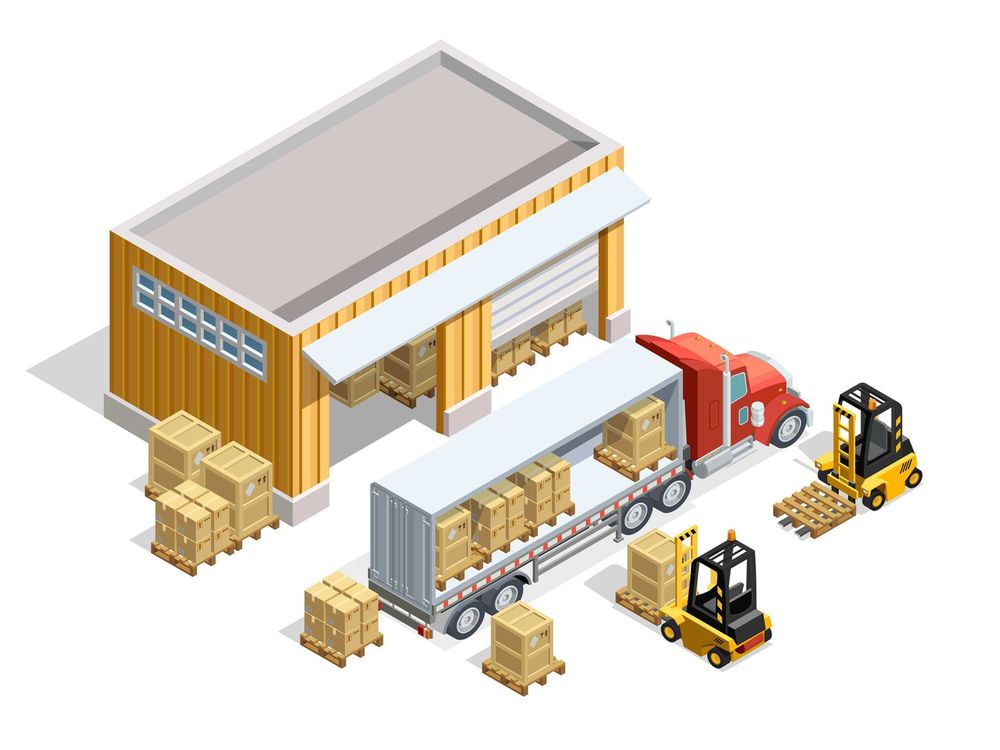
EWM is based on the robust in-memory computing capabilities of the SAP HANA platform. This enables EWM to process your warehouse data quickly and precisely. Additionally, it makes it possible for you to quickly access and examine your warehouse data for use in reporting and decision-making.
Some of the benefits of the SAP S/4HANA Warehouse Management:
- Improved customer service
- Boost efficiency
- inventory traceability with real-time visibility
- Boost adaptability and scalability
- Lower warehouse costs
- Ensure compliance for international trade and sustainability
SAP S/4HANA Logistics Lines of Business
Existing SAP ERP module naming conventions are no longer relevant due to the streamlined feature update. Users would frequently use modules like Materials Management, Warehouse Management, Plant Maintenance, etc. in the legacy suite to carry out their jobs.
These modules have been replaced by SAP with four complementing functional LoBs that fit under the more general heading "SAP S/4HANA Logistics" due to SAP S/4HANA's value maps. They are:
SAP S/4HANA Sourcing and Procurement, SAP S/4HANA Manufacturing, SAP S/4HANA Supply Chain, SAP S/4HANA Asset Management
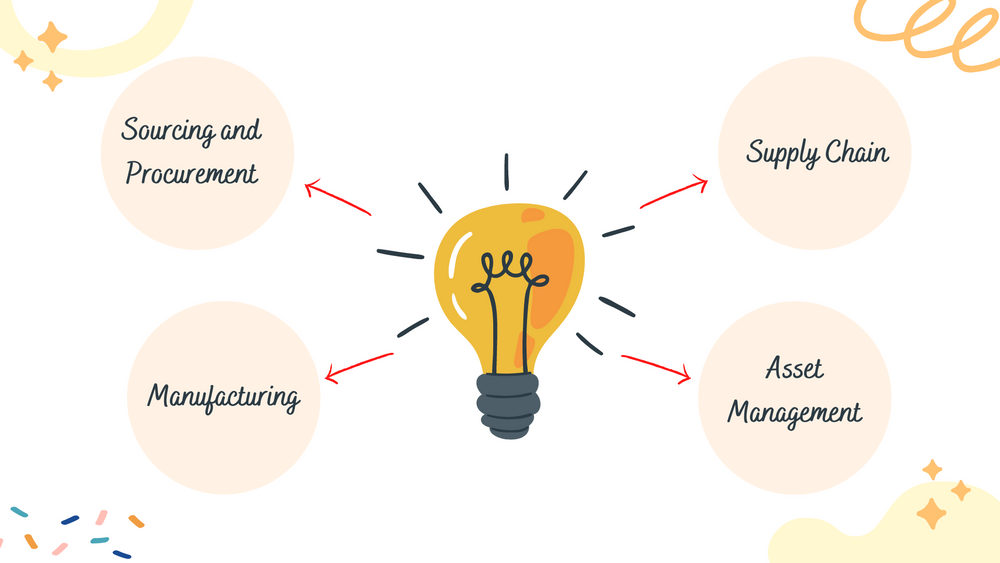
SAP S/4HANA Sourcing and Procurement
Through expanded procurement, operational purchasing, contract and supplier management, and other methods, SAP helps users find and acquire items in the Sourcing and Procurement LoB.
SAP S/4HANA Manufacturing
- It is necessary to transform raw materials into completed products after they have been purchased and delivered.
- Through responsive manufacturing, production operations, scheduling and delivery planning, quality management, and other methods, SAP helps users in the Manufacturing LoB create products.

- Manufacturing LoB is thought to include legacy operations including production planning and control, quality and quality issue management, and manufacturing extension SAP Manufacturing Integration and Intelligence (SAP MII).
SAP S/4HANA Supply Chain
The Supply Chain LoB aids users in general business planning, as well as storing and shipping things when acquired.
It may be the most comprehensive of the four LoBs. It involves procedures such as production planning, batch traceability, warehousing and inventory control.

SAP S/4HANA Asset Management
Care must also be taken of the manufacturing assets that product-based enterprises own, such as buildings, machinery, and other tools.
In the Asset Management LoB, SAP offers assistance to users in maintaining certain internal items.
S/4HANA Condition Contract Management
- For the administration of supplier and customer conditions, Condition Contract Management offers a centralised, standardised solution
- Single or more customers/suppliers may be supported through condition contracts then, different types of settlement that are listed on the settlement calendar are supported by condition contracts
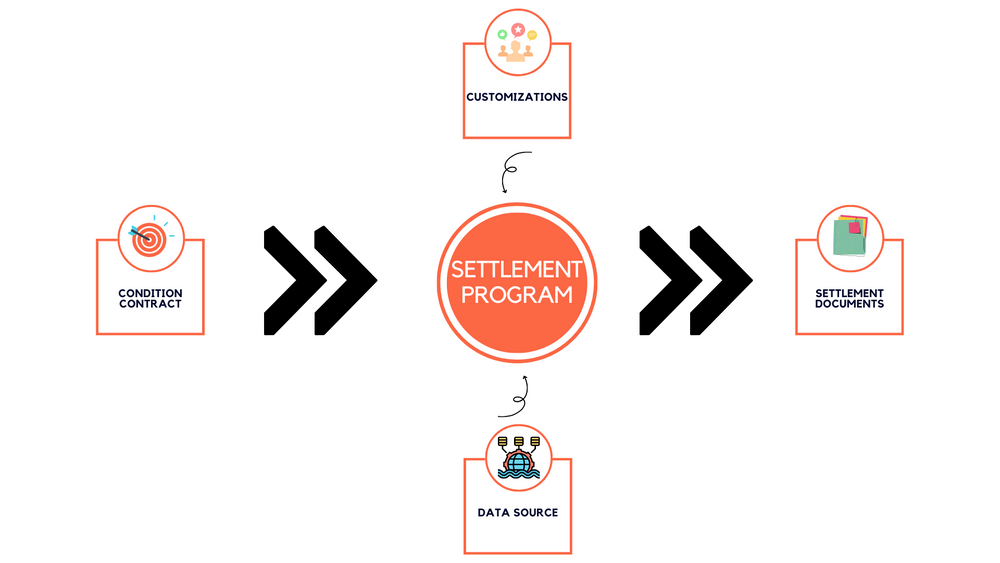
- On the condition contract, separate settlement and accrual conditions are made.
Settlement and Reporting of Contracts
- In the subsequent partial and final settlements, rebate sums from partial settlements are subtracted
- A partial or final settlement reverses accruals from a prior delta accrual made within the time period
- At every point along the business process, the business volume for a conditional contract can be seen
- You can keep track of settlement documents created during a settlement run.
S/4HANA Output Management
Output management for SAP S/4HANA is advised but not required. The SAP S/4HANA output management framework's scope is not equivalent to the NAST framework's scope, and innovations will only be made there.
The new, unified, and optional framework for handling the output management procedures is SAP S/4HANA output management.

All about Storage location MRP Area
Only one MRP region may be given control over a plant's storage site. For every subcontractor, you may also specify an MRP area. A subcontractor can only be used for one MRP area. Only one subcontractor may be present in an MRP area of the subcontractor type.
The three various sorts of MRP area are as follows:
- Plant MRP Area
- MRP Areas for Storage Locations
- MRP Areas for Subcontractors
What is SAP S/4HANA Readiness Check?
A method called SAP S/4HANA Readiness Assessment allows a company to assess how prepared its present environment is for a prospective migration to SAP S/4HANA. Before switching to SAP S/4HANA, the assessment can assist identify weaknesses and areas for development.
The SAP Readiness Check for SAP S/4HANA upgrades includes the following checks:
- SAP Fiori Apps
- Integration
- Custom Code Analysis
- SAP Innovative Business Solutions
- Add-On Compatibility
- Simplification Items
Knowing about Custom Code Adaptation
One of the reasons why SAP ECC customers opt for the system conversion route when switching to SAP S/4HANA is to protect their custom code investment.
The analysis of custom code that is impacted by simplifications is the primary work during the preparation phase. Additional changes are required if the source system is a database that is not a HANA database. The optimal time to find unused custom code is during analysis. So that lessens the work required to write bespoke code.
Some code modifications don't require a repository designed for SAP S/4HANA.These modifications are carried out by skilled consultants during the planning stage of the conversion project.
There are various tools that assist with analysis of custom code, They are:
1. Identifying unused custom code
2. Static code checks
3. Code Analysis
Moving Process from Compatibility scope to Strategic Solutions
Prior to your system being converted to SAP S/4HANA, MRP areas can be built and used in ERP.The innovative and strategic tool for handling commissions and rebates is settlement management. The previous remedy is no longer usable.
Output management for SAP S/4HANA is advised but not required. NAST and other frameworks are still available for use.Although SAP S/4HANA still offers a number of ERP functionalities, you must plan your transition to the strategic solutions.
Why is SAP S/4HANA important for Logistics Businesses?
In a fast-changing business landscape, it's more important than ever for logistics businesses to have a flexible, agile IT infrastructure that can support their growth. SAP S/4HANA is a next-generation enterprise resource planning (ERP) system that provides the flexibility and scalability needed to support the changing needs of logistics businesses.
SAP S/4HANA includes built-in analytics and reporting tools that give logistics businesses the visibility they need to make informed decisions about their operations. The real-time data provided by SAP S/4HANA can help logistics businesses optimize their supply chains, improve customer service, and drive growth.

SAP S/4HANA is also designed to be easily integrated with other software applications and systems, making it easier for logistics businesses to connect with their partners and suppliers. The integration capabilities of SAP S/4HANA can help reduce costs and increase efficiency across the supply chain.
Implementing SAP S/4HANA can help logistics businesses realize significant benefits in terms of cost savings, operational efficiencies, and improved decision-making.
Understanding S/4HANA Transformation
Many firms have recently set the objective of upgrading from the current SAP ECC system to the newest SAP system, SAP S/4HANA, in order to increase their productivity and agility.
The efficiency of internal organizational processes is increased by this transition. As a result, every corporation intends to enhance their SAP ECC system in order to remain current and adaptable. Understanding the important differences between SAP ECC and SAP S/4HANA can make it easier for you to make decisions.
SAP S/4HANA implementation – Challenges
Some of the challenges for the SAP S/4HANA Implementation are listed below:

- Custom code remediation efforts
- Incomplete assessment Exercise
- Fiori user interface
- Impact of Change Management
- S/4HANA Conversion
Streamlining the migration to S/4HANA – KTern.AI
SAP S/4HANA conversions can be a daunting task for any organization. But with the help of KTern.AI, you can make the process much easier and smoother.
KTern.AI is an AI-powered platform that can help you automate your SAP S/4HANA conversions.
KTern 101: Best Way to Plan an SAP S/4HANA Migration
With its help, you can easily convert your data and processes from your current system to SAP S/4HANA without any hassle.
Offerings of KTern.AI
KTern.AI is a ready-to-use automated Digital Workspace with a focus on SAP S/4HANA transformations that contains automation tools for project execution and business operations. It runs on S4HANAPEDIA, the engine that automatically learns knowledge. Through the SAP Activate Methodology's Discover, Prepare, Explore, Realize, Deploy, and Run phases, KTern.AI provides stakeholders with insightful information.
To aid with your digital transformation process, KTern.AI offers the following 5 modules.
Digital Maps, Digital Projects, Digital Process, Digital Labs and Digital Mines.
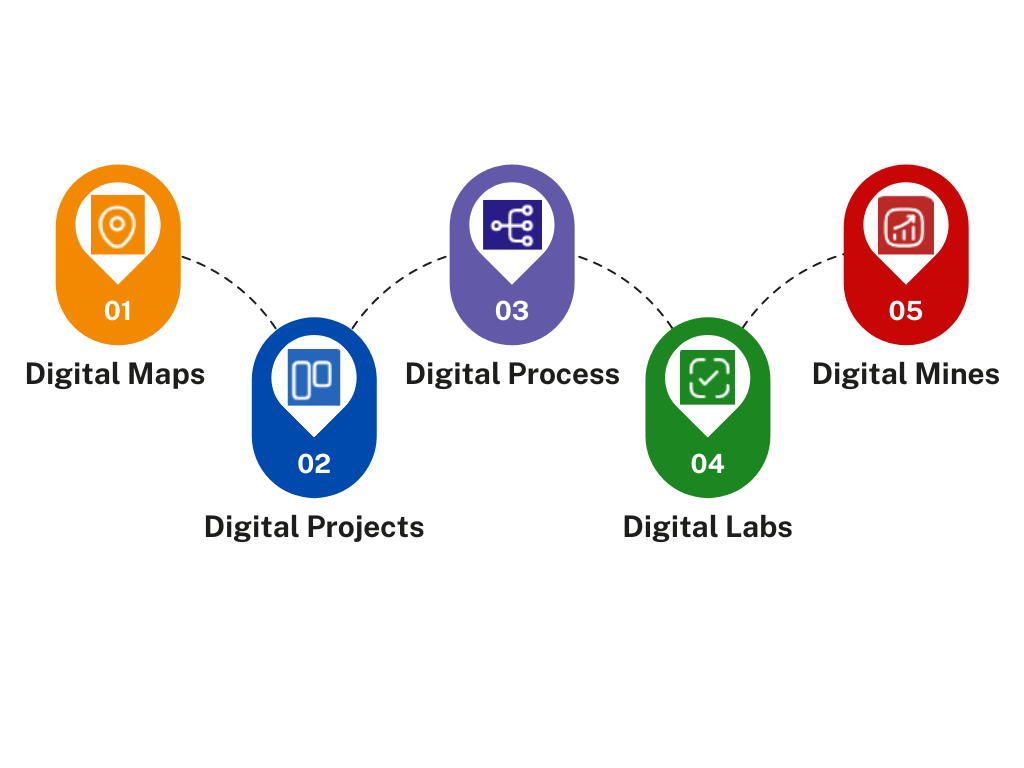
Digital Maps - Analysis of business processes, landscapes, and custom process with implications of S/4HANA's modifications and simplifications and optimization insights
Digital Projects - With intelligent insights, SAP can provide project governance, simulation, and stakeholder collaboration.
Digital Process - Activation, implementation, and orchestration of business processes inside the corporation are tracked and monitored more efficiently.
Digital Labs - Continuous testing for SAP product upgrades is intended for quick, organized testing throughout the SAP digital transformation process.
Digital Mines - Data mining and validation at the business layer before, during, and after the transition taking into account S/4HANA's simplifications.
Conclusion
An SAP S/4HANA implementation can be a game-changer for logistics businesses. By streamlining processes and improving efficiency, businesses can see a significant impact on their growth. With the right implementation partner, businesses can reap the benefits of an SAP S/4HANA implementation and take their business to the next level.
Are you interested in learning more about SAP S/4HANA Implementation and KTern? Please take your time reading our articles and watching our webinars by visiting our website.
Schedule a direct 1hour rapid session on KTern and a product demonstration at Schedule Demo to discover more.

